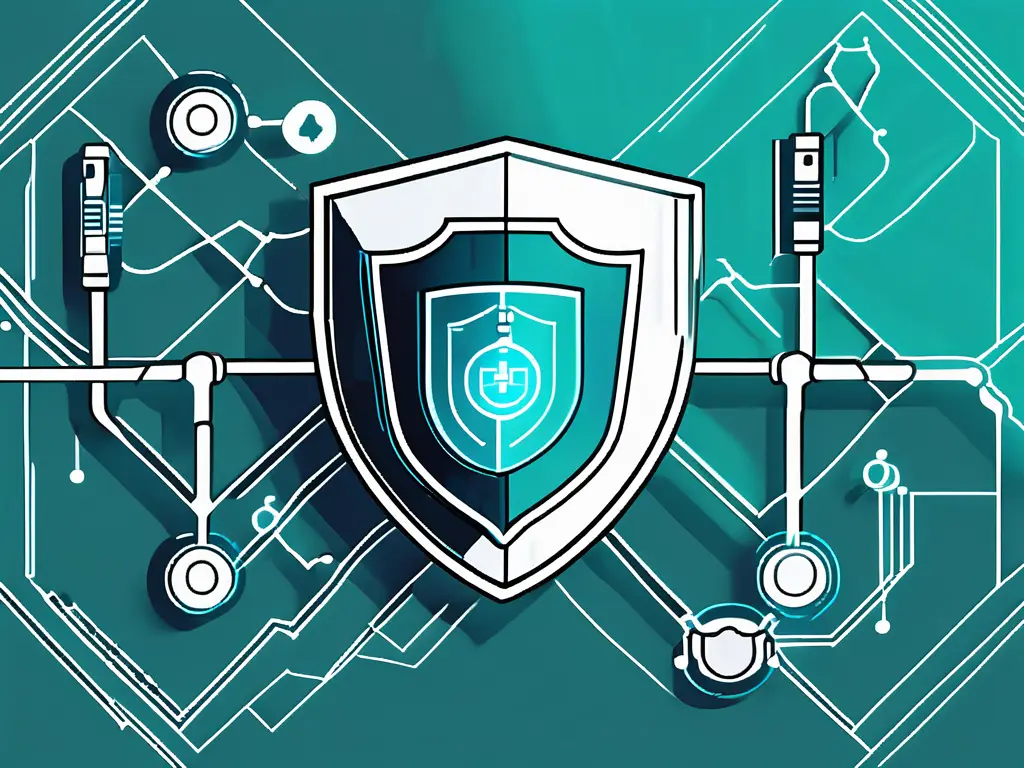The ever-evolving threat landscape calls for stringent regulations to ensure the safety and integrity of medical devices. One such regulation that has significantly impacted medical device cybersecurity is 524B(b)(2). Let’s delve into the intricacies of this regulation and explore its implications for manufacturers and healthcare providers.
Understanding the 524B(b)(2) Regulation
When delving into the complexities of the 524B(b)(2) regulation, it is crucial to understand its significance in medical device cybersecurity. This regulation is a critical framework to safeguard medical devices from potential cyber threats, ensuring their integrity and security in an increasingly interconnected world.

The Basics of 524B(b)(2)
Before embarking on a detailed exploration of the 524B(b)(2) regulation, it is essential to establish a solid foundation by grasping the fundamental principles underlying this regulatory framework. 524B(b)(2) explicitly targets medical devices, emphasizing the need for stringent cybersecurity measures to mitigate risks and enhance the resilience of these devices against evolving cyber threats.
Key Provisions of the 524B(b)(2) Regulation
Having laid the groundwork for understanding the essence of the 524B(b)(2) regulation, it is imperative to delve into its key provisions that outline the specific requirements for compliance. One of the central mandates of 524B(b)(2) is the insistence on medical device manufacturers to integrate robust cybersecurity measures into their product development processes. This includes conducting comprehensive risk assessments to identify vulnerabilities, incorporating security features into device design, and establishing protocols for ongoing monitoring and updates to address emerging cybersecurity challenges.
The Intersection of 524B(b)(2) and Medical Device Cybersecurity
The Role of 524B(b)(2) in Cybersecurity
Given the increasing reliance on interconnected medical devices, the role of 524B(b)(2) in cybersecurity cannot be overstated. This regulation aims to ensure that medical devices are secure from cyber attacks, prevent potential patient harm, and safeguard sensitive medical data.
Medical device cybersecurity is a complex and evolving field that requires constant vigilance and adaptation to new threats. Implementing 524B(b)(2) serves as a foundational framework for addressing cybersecurity risks in medical devices, setting a standard for manufacturers to follow to protect patient safety and data integrity.
How 524B(b)(2) Affects Medical Device Manufacturers
For medical device manufacturers, compliance with 524B(b)(2) is a regulatory obligation and the need of the hour. By adhering to this regulation, manufacturers demonstrate their commitment to delivering safe and reliable devices, strengthening customer trust, and enhancing their brand reputation.
Integrating cybersecurity measures into the design and development of medical devices can lead to innovation and differentiation in the market. Manufacturers prioritizing cybersecurity meet regulatory requirements and position themselves as leaders in the industry, driving advancements that benefit both healthcare providers and patients.
The Implications of 524B(b)(2) for Healthcare Providers
Compliance Challenges for Healthcare Providers
While 524B(b)(2) primarily impacts medical device manufacturers, healthcare providers face compliance challenges. They must ensure that the devices they use meet the required cybersecurity standards. This involves working closely with manufacturers to review device security, implementing appropriate safeguards, and staying updated on evolving threats.
Healthcare providers need to consider the implications of 524B(b)(2) beyond just device compliance. They must also assess the potential impact on patient care, data security, and overall operational efficiency. Integrating cybersecurity measures into their existing workflows and protocols is essential to maintain a secure and resilient healthcare environment.
Mitigating Cybersecurity Risks in Healthcare
Healthcare providers must proactively mitigate threats in the face of growing cybersecurity risks. Alongside complying with 524B(b)(2), providers should invest in robust cybersecurity frameworks, educate their staff on best practices, and establish incident response plans. This comprehensive approach will help protect patient safety and sensitive medical information.
Healthcare providers should collaborate with cybersecurity experts and regulatory bodies to stay abreast of the latest threats and compliance requirements. By fostering a continuous learning and improvement culture, providers can enhance their cybersecurity posture and better safeguard their systems and data from malicious actors.
Future Outlook: 524B(b)(2) and Medical Device Cybersecurity
Potential Changes to the 524B(b)(2) Regulation
Given the dynamic nature of cybersecurity threats, it is crucial to keep regulatory frameworks current. The 524B(b)(2) regulation is not exempt from potential modifications. Industry experts anticipate that future updates may incorporate stricter requirements and additional guidelines to address emerging vulnerabilities.
One potential area of focus for future modifications to the 524B(b)(2) regulation could be the inclusion of specific incident response and reporting protocols. By mandating clear procedures for handling cybersecurity incidents, regulators can enhance transparency and accountability within the medical device industry. Additionally, there may be an emphasis on continuous monitoring and assessment of cybersecurity measures to ensure ongoing compliance with evolving threats.
The Future of Medical Device Cybersecurity with 524B(b)(2)
Looking ahead, the future of medical device cybersecurity with 524B(b)(2) holds promise. With manufacturers and healthcare providers prioritizing cybersecurity, we can expect to witness the development of more innovative and secure medical devices. This will not only benefit patients but also contribute to the overall advancement of the healthcare industry.
The integration of artificial intelligence (AI) and machine learning technologies into medical device cybersecurity practices is a trend that is likely to shape the future landscape. These advanced technologies can enhance threat detection capabilities and enable proactive risk mitigation strategies. By leveraging AI-driven solutions, stakeholders can stay ahead of cyber threats and safeguard the integrity of medical devices and patient data.
As we navigate the ever-changing landscape of medical device cybersecurity, regulations like 524B(b)(2) play a pivotal role in ensuring the safety and reliability of these devices. By embracing these regulations, manufacturers and healthcare providers can collaborate to build a secure and resilient healthcare ecosystem. So let’s continue prioritizing cybersecurity for the well-being of patients and the healthcare industry.
As we continue to advance in medical device cybersecurity, the importance of partnering with a knowledgeable and dedicated cybersecurity firm cannot be overstated. Blue Goat Cyber, a Veteran-Owned leader in cybersecurity excellence, offers bespoke services that cater to the unique challenges faced by the medical device industry. Our expertise in medical device cybersecurity, penetration testing, and compliance with HIPAA and FDA regulations ensures that your devices comply with regulations like 524B(b)(2) and are fortified against the latest cyber threats. Contact us today for cybersecurity help, and let us help you transform your cybersecurity challenges into opportunities for growth and innovation. Secure your medical devices and peace of mind with Blue Goat Cyber.
Check out our medical device cybersecurity premarket submission FDA compliance package.


